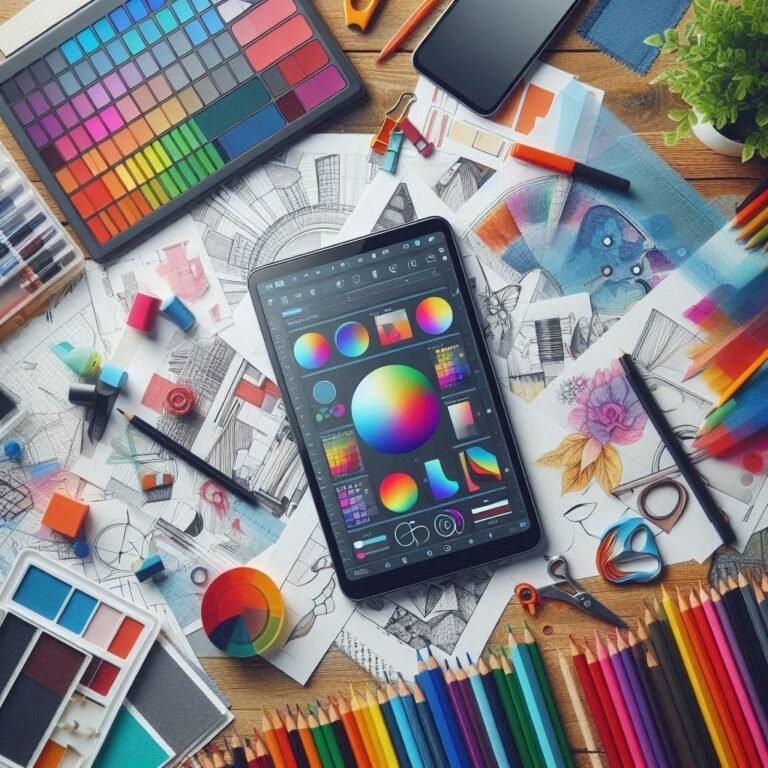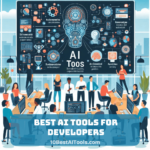Unleash Your Creativity: Finding the Perfect AI Brushstroke for Your Vision
Best AI Art Generator—imagine this: You’re a small business owner needing eye-catching social media graphics, a writer brainstorming a book cover, or a hobbyist craving to bring your wildest ideas to life—but you lack design skills, time, or a budget for a professional artist. Enter AI art generators. Tools like MidJourney, DALL-E 3, and Stable Diffusion promise to turn text into stunning visuals in seconds. But which one is right for you? Let’s break down their strengths, quirks, and hidden pitfalls so you can pick the best AI art generator for your needs.
Comparison Table: Best AI Art Generator
| Feature | MidJourney | DALL-E 3 | Stable Diffusion |
|---|---|---|---|
| Pricing | 10–10–120/month | 20–20–165/month (via ChatGPT+) | Free (self-hosted) or paid platforms |
| Ease of Use | Requires Discord | User-friendly ChatGPT UI | Technical setup needed |
| Output Style | Surreal, artistic | Photorealistic, precise | Highly customizable |
| Customization | Moderate | Limited | Advanced (via tweaks) |
| Speed | Fast (1–2 mins) | Fast (10–20 secs) | Varies (depends on setup) |
| Commercial Use | Allowed (paid plans) | Allowed with restrictions | Full ownership |
| Ethical Safeguards | Moderate | Strict (no violence, celebrities) | None (user responsibility) |
Detailed Breakdown of All Tools
1. MidJourney
- Best For: Concept artists, fantasy/sci-fi enthusiasts, and marketers needing bold visuals.
- Features:
- Discord-based interface.
- “Vary” and “Upscale” tools to refine outputs.
- Community gallery for inspiration.
- Pros:
- Stunning, ethereal art style.
- Active community support.
- Regular updates (e.g., v6 for realism).
- Cons:
- No free tier; paid plans only.
- Limited control over fine details.
- Pricing: Starts at $10/month (200 images).
- Alternatives: NightCafe, Artbreeder.
2. DALL-E 3 (via ChatGPT+)
- Best For: Content creators, bloggers, and businesses needing quick, polished visuals.
- Features:
- Integrated with ChatGPT for conversational edits.
- Generates text within images (e.g., logos).
- Built-in ethical filters.
- Pros:
- Easiest to use; no technical skills needed.
- High photorealism.
- Free credits for new users.
- Cons:
- Strict content policies (e.g., no famous faces).
- Costs add up quickly ($20/month for 400 images).
- Pricing: $20/month (ChatGPT+ subscription).
- Alternatives: Canva’s AI tools, Adobe Firefly.
3. Stable Diffusion
- Best For: Tech-savvy users, developers, and artists craving full control.
- Features:
- Open-source model (self-host or use platforms like DreamStudio).
- Customizable via prompts, negative prompts, and plugins.
- Supports NSFW content (if self-hosted).
- Pros:
- Free/cheap if self-hosted.
- Unlimited creativity with tweaks.
- Full commercial rights.
- Cons:
- Steep learning curve.
- Requires powerful hardware.
- Pricing: Free (self-hosted) or 1–1–10/month via platforms.
- Alternatives: Runway ML, Leonardo AI.
Real-World Success Stories: How Creators Are Leveraging AI Art Tools
Case Study 1: Indie Game Studio Uses MidJourney for Concept Art
A small game studio used MidJourney’s surreal aesthetics to design characters and environments for their fantasy RPG. By generating hundreds of variations with prompts like “cyberpunk elf warrior, neon-lit forest, hyper-detailed,” they cut concept art costs by 60% and accelerated their pre-production phase.
Case Study 2: E-commerce Brand Boosts Sales with DALL-E 3
A skincare company used DALL-E 3 to create product visuals for social media ads. By prompting “luxury serum bottle on marble countertop, morning sunlight, minimalist style,” they generated polished photos without hiring a photographer—resulting in a 30% increase in click-through rates.
Case Study 3: Digital Artist Masters Stable Diffusion for Gallery Work
An experimental artist combined Stable Diffusion with Photoshop to create a hybrid art series. By training a custom model on their own sketches, they produced unique pieces that sold at a gallery for $2,000+ each, proving AI art can coexist with traditional techniques.
The Evolution of AI Art: What’s Next for MidJourney, DALL-E 3, and Stable Diffusion?
The AI art landscape is evolving rapidly, and staying ahead means understanding where these tools are headed. MidJourney recently rolled out its v6 update, which dramatically improved photorealism and text rendering—a nod to user demands for more control over practical applications like advertising and product design.
Meanwhile, DALL-E 3’s integration with ChatGPT hints at a future where AI art generation becomes a seamless part of conversational workflows, ideal for marketers and writers who want to brainstorm visuals while drafting copy.
Stable Diffusion, as the open-source underdog, thrives on community innovation. Developers are already experimenting with plugins like ControlNet (for pose-specific generation) and LoRAs (to fine-tune styles), making it a playground for tech-savvy creators. However, ethical debates loom large: How will copyright laws adapt as AI models train on ever-expanding datasets? Will tools enforce stricter safeguards, or will responsibility fall entirely on users? These questions will shape the next generation of AI art tools—so keep an eye on updates!
How to Choose the Best AI Art Generator
Ask yourself:
- Budget: Are you okay with subscriptions, or do you need free options?
- Skill Level: Do you want plug-and-play (DALL-E) or customizable (Stable Diffusion)?
- Use Case: Need logos with text? DALL-E. Dreamy landscapes? MidJourney. Total control? Stable Diffusion.
- Ethics: Will you use it commercially? Check licensing terms!
Pro Tips for Maximizing These AI Tools
- MidJourney: Use “–v 6” for realism and “/describe” to reverse-engineer styles.
- DALL-E 3: Start prompts with “A professional photo of…” for crisp results.
- Stable Diffusion: Use negative prompts like “blurry, deformed” to fix oddities.
- All Tools: Iterate! Generate 5+ variations to find gold.
Ethical Considerations When Using AI Tools
- Bias: AI models often underrepresent non-Western cultures. Double-check outputs.
- Copyright: Avoid generating copyrighted characters (e.g., Mickey Mouse).
- Transparency: Disclose AI use if selling art—some buyers prefer human-made.
- Environment: Training these tools consumes energy. Use them mindfully!
Conclusion for Best AI Art Generator
Whether you’re crafting memes, designing merch, or exploring digital art, there’s an AI tool for you. MidJourney dazzles with its dreamy vibe, DALL-E 3 simplifies professionalism, and Stable Diffusion hands you the keys to the creative kingdom. Try one today—your next masterpiece is a prompt away!
Check Out: Jasper vs Copy.ai vs Writesonic
FAQs for Best AI Art Generator
Q: Can I use these tools for free?
A: Stable Diffusion is free if self-hosted; others offer limited trials.
Q: Which tool is best for beginners?
A: DALL-E 3 (via ChatGPT) is the most intuitive.
Q: Can I sell AI-generated art?
A: Yes, but check licensing terms—Stable Diffusion grants full ownership.
Q: Are AI-generated images “original”?
A: Legally, yes. Ethically? Credit the tool if possible!
Q: Why does my AI art look weird?
A: Refine your prompts (e.g., “4K, cinematic lighting”) and experiment!
Follow 10 Best AI Tools on LinkedIn for more









